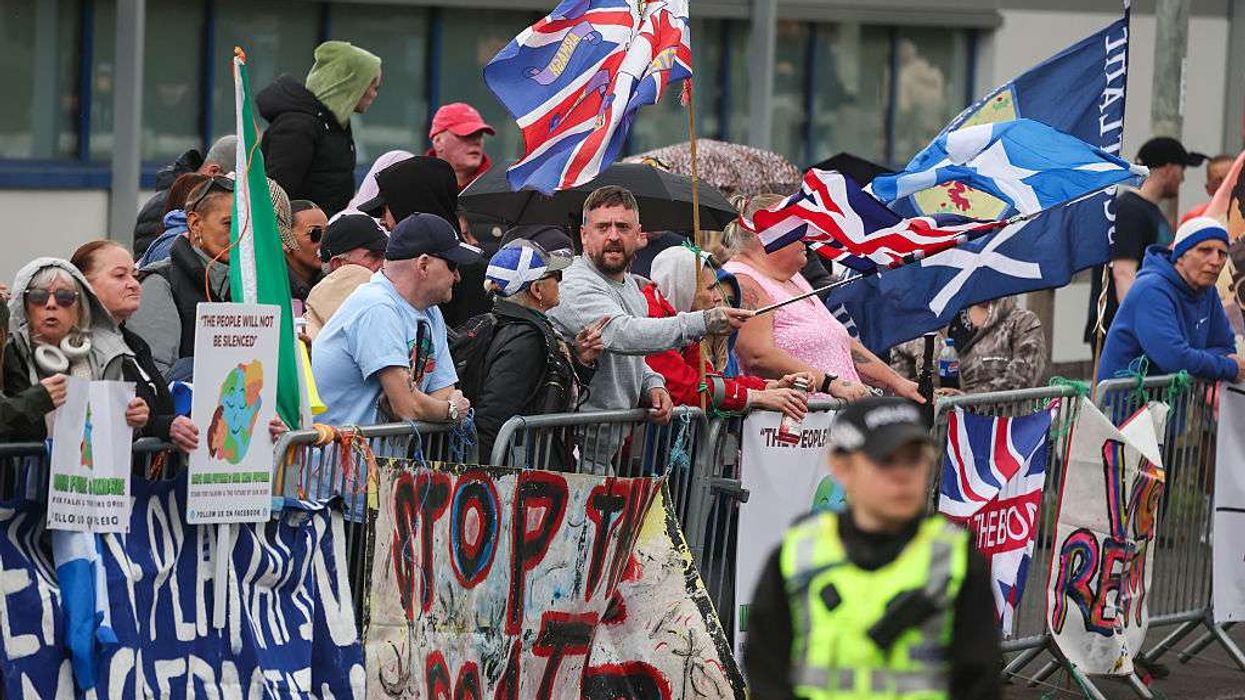GERMANY has promised to dramatically increase the number of skilled Indian workers allowed into the country, as prime minister Narendra Modi hosted Chancellor Olaf Scholz in New Delhi last Friday (25).
The German leader, on his third visit to India since last year, was accompanied by several cabinet ministers for discussions between the leaders of the world’s thirdand fifth-largest economies.
His administration agreed to increase the number of visas granted annually to skilled Indian workers to 90,000, up from 20,000. “The message is that Germany is open for skilled workers,” Scholz said.
Modi hailed the agreement as an economic boon to both countries.
“When India’s dynamics and Germany’s precision meet, when Germany’s engineering and India’s innovation meet... a better future is decided for the Indo-Pacific and the entire world,” he said.
India and Germany first signed a migration agreement two years ago to facilitate mobility for professionals and students. Berlin has also pledged to make its visa application process less bureaucratic and to improve the recognition of Indian professional qualifications in Germany.
Scholz arrived in India late last Thursday (24), following a state visit in February 2023 and the G20 summit in New Delhi later that year.
India’s foreign ministry said last week the partnership between both countries had “deepened” over the years. Germany and India are defence partners, and naval forces from both sides undertook a “maritime partnership exercise” last week in the Indian Ocean.
The maiden exercise was aimed at “further strengthening the maritime connect between the two nations and interoperability between the navies”, a statement from India’s navy read last Thursday (24).
“We also want to deepen our cooperation on defence and agree to bring our militaries closer together,” Scholz said.
“Our overall message is clear: We need more cooperation, not less.”
Germany has not traditionally had close defence ties with India, but it is now pitching to join the latter’s effort to wean its arms base from decades of dependence on Russia, at a time when the West seeks to counter China’s growing influence.
German Thyssenkrupp is one of two bidders to have partnered with Indian firms to build six conventional submarines in India, in a deal estimated to be worth $5 billion (£3.8bn).
The Indian Navy is expected to pick between the German company or Spain’s Navantia soon.
New Delhi and Berlin are working on renewable energy projects, Modi said, including numerous possible investments in transport infrastructure development.
“India is completely transforming its physical infrastructure,” Modi told the Asia-Pacific conference of German business in New Delhi, attended by Scholz.
“Record investments are being made. This offers many possibilities for German and Indo-Pacific region companies.”
Scholz’s visit also covered India’s ambitious programme to scale up production of “green hydrogen”, a clean energy source in demand in Germany as Russian oil and gas supplies have shrunk and Berlin seeks to meet its climate goals.
Representatives of both countries agreed on a bilateral “green hydrogen road map” last Friday, the details of which have yet to be published.
In 2022 Germany pledged 10 billion euros to help India achieve its climate goals. German state lender KfW’s unit DEG, which focuses on the private sector, plans to more than double investment in India to $1 billion (£770.3million) over the next few years, focusing on renewable energy and infrastructure, an official, Jochen von Frowein, has said.
Scholz reiterated his economy minister’s push for swift progress on talks for a free-trade pact between India and the European Union.
A German delegation led by secretary of state for defence Nils Hilmer onboard INS Vikrant, visiting the Western Fleet of the Indian navy at sea, off Goa, last Sunday (27)“I am sure that if we work on this together, prime minister, this could happen in months rather than years,” Scholz said.
Earlier, trade minister Piyush Goyal warned that India would be unable to strike such a deal if the bloc insisted on getting access to the Asian giant’s dairy industry. A trade deal could be swiftly reached if sensitivities were respected on both sides, Goyal told the conference, following last Thursday’s comments by German economy minister Robert Habeck that agriculture was the talks’ “most problematic” area, and suggesting that they first tackle the industrial sector.
Progress has been slow on the talks, initially targeted to be wrapped up by the end of 2023, with India blaming the EU for what it called “irrational” standards, as one reason.
Scholz and his team travelled to Goa last Saturday (26) to inspect naval vessels before returning to Germany in the evening. But the two countries diverge over ties with Russia and its war with Ukraine.
While Germany strongly backs Kyiv, Modi last week attended a BRICS summit where he embraced Russian president Vladimir Putin.
In contrast to Germany, Modi’s government has maintained its longstanding ties with Moscow even as it also courts closer security partnerships with its Western allies. While in New Delhi, Scholz said reports that Russia could soon send North Korean troops to fight in Ukraine were “very worrying”.
“It is serious and, of course, something that escalates the situation further,” he said. “At the same time, it also shows that the Russian president is in dire straits. He has now allied himself with countries whose behaviour he once strongly criticised.” (Agencies)












